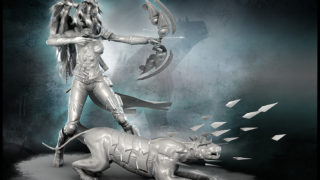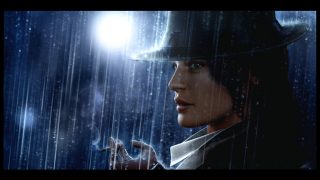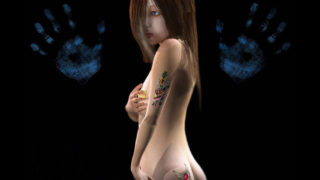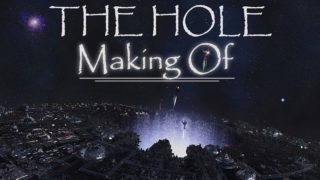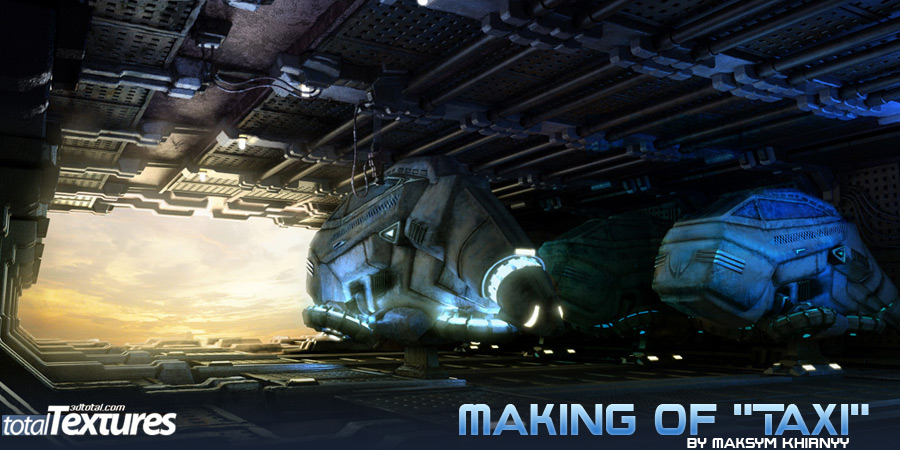
Making Of “Taxi”
First, I started with a sketch of the vehicles. I used paper and pen rather than the computer, as this is what Im used to, but you could ask create something with a tablet in digital format.
|
I wanted to have the piece be inspired by the film “The Fifth Element” but keeping my own style. I wanted the vehicles in the shot to be something that could be used for both Earth and other planets.
You can see a bit of this low detail in the main model. Usually when modeling, I always start basic, and make details by cutting faces, extruding, and champfering. A little rule I sometimes go by is “Champfer it!” The detail grows and grows as you cut more details into the model, and get more extrusions and champfered edges. |
|
 |
 |
 |
 |
|
A good starting point is to take a clean texture from the 3D total textures DVD into Photoshop as a base layer, and then place other grunge (dirt maps) on top. Next, I experiment with blending modes set to either “multiply” or “overlay”. Use your best judgement, sometimes adjusting the opacity, or using the “nomral” overlay mode can also work. Remember that “multiply” will exlude white, and “screen” will exlude black, and “overlay” is a bit in between. Because the scene would only be used for a still image, and not for an animation, I really only unwrapped the vehicles. For everything else I used simple mapping methods like “planar” and “box” in 3D Max, especially on the environment. I also used Vray light material for elektrical engines on the main model, this is one of the tool i ever used, but if you used this material wiht amount more than 20, you must give other material whitch may be will reflect your light material, more subdivision in reflection settings like 16 or 32, so you will have a very good quality of reflection.
Finally, one blue light for contrast on the right side of the picture with intensity of 4.5. All of the Lights have Subdivision of 8 for testing and 16 for the final image.
|
   |
|
Maksym Khirnyy’s Profile This image was created using a few of the hundreds of textures from the Total Texture CDs – very comprehensive texture collections priced with the hobbyist in mind. To see more examples, download free samples and read full details follow this link |









